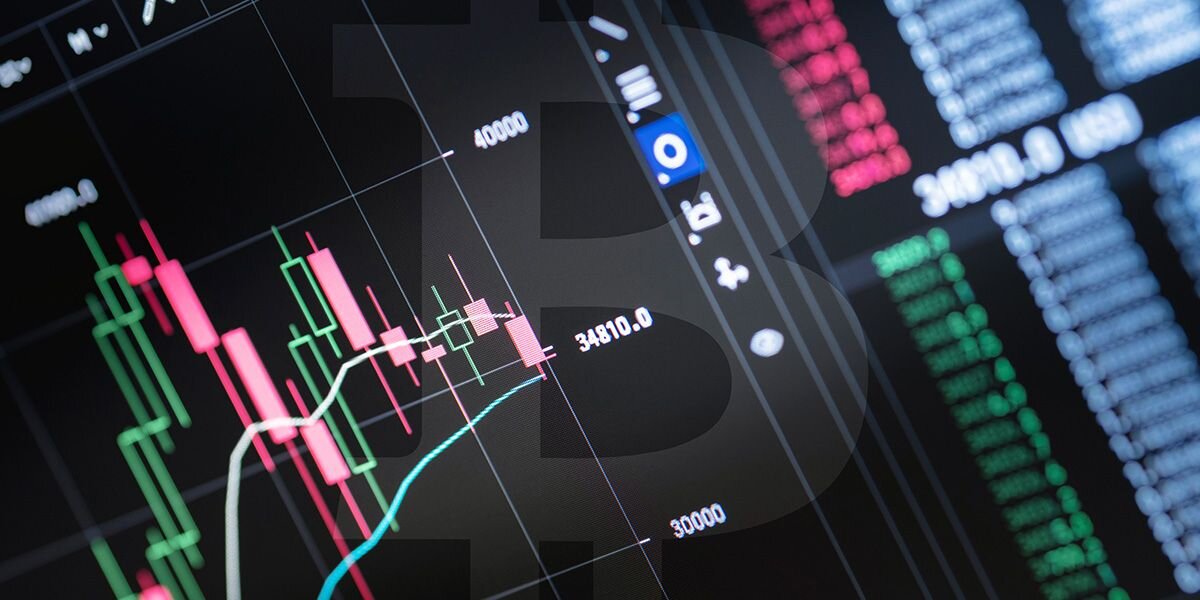What is Leverage, and How Does it Work?
Leverage is a fundamental concept in financial markets that allows traders to amplify their exposure to an asset or investment using borrowed funds. It enables individuals to control larger positions with a relatively smaller amount of capital. In the context of cryptocurrency trading, leverage can provide traders with the potential to magnify their profits. However, it is essential to understand how leverage works and the associated risks. So, is x3 leverage risky?
At its core, leverage is expressed as a 2:1, 5:1, or even higher ratio. This ratio represents the multiple by which a trader can increase their position size compared to their invested capital. For instance, with a leverage ratio of 5:1, a trader can hold a position five times larger than their initial investment.
The key mechanism behind leverage is the concept of margin trading. When engaging in leveraged trading, traders must put up a certain percentage of the total position value as collateral, known as margin. The broker or exchange finances the remaining portion of the position. This borrowed amount allows traders to control a larger position and potentially increase their returns.
Let's illustrate this with an example. Suppose you have $1,000 and want to trade Bitcoin with a leverage ratio of 10:1. With leverage, you can hold a position worth $10,000. In this scenario, your $1,000 is the margin, while the remaining $9,000 is borrowed from the broker or exchange.
The allure of leverage lies in its potential to generate substantial profits. Even a small price increase can result in significant gains if the market moves in your favor. So, is x3 leverage risky? It is important to note that leverage amplifies profits and losses.
While leverage can magnify your profits, it also exposes you to higher risks. Since leveraged positions are larger than your initial capital, even a small adverse market movement can lead to substantial losses. Moreover, the larger the leverage ratio, the greater the risk involved.
It's crucial to exercise caution when utilizing leverage in cryptocurrency trading. Market volatility is inherent in the crypto space, and sudden price fluctuations can result in rapid and significant losses. Traders should thoroughly assess their risk tolerance, set strict risk management strategies, and closely monitor their positions when using leverage.
Before venturing into leveraged trading, it is essential to understand the basics of leverage and its potential benefits. It is crucial to weigh the potential for increased profits against the higher risks associated with leverage. By staying informed and implementing sound risk management practices, traders can navigate the complexities of leveraged trading more effectively. So, is x3 leverage risky?
The Risks Associated with X3 Leverage
X3 leverage, or leverage with a ratio of 3:1, introduces a higher level of risk compared to lower leverage ratios. While it offers the potential for increased profits, it also amplifies the potential losses in trading positions. Understanding the risks associated with x3 leverage is crucial for traders considering its use in cryptocurrency trading. So, why is x3 leverage risky?
Volatility and Increased Exposure to Market Fluctuations
One of the primary risks of x3 leverage is the heightened exposure to market volatility. Cryptocurrency markets are known for their price swings and rapid fluctuations. With x3 leverage, these movements can have a more pronounced impact on your positions. Even small market downturns can result in significant losses, potentially exceeding your initial investment.
Magnified Losses and the Potential for Account Liquidation
Due to the increased exposure to market fluctuations, x3 leverage amplifies profits and losses. While it can boost your gains in a favorable market, it also magnifies your losses in adverse market conditions. The losses can quickly erode your capital if the market moves against your leveraged position. In extreme cases, if the losses surpass the margin requirements, it can lead to account liquidation, resulting in a complete loss of your investment.
Margin Calls and Forced Position Closure
Leveraged trading involves maintaining a certain margin level to sustain your positions. If the market moves unfavorably and your margin falls below the required level, you may receive a margin call from your broker or exchange. A margin call requires you to add more funds to your account or close a portion of your position to restore the necessary margin level. Failure to meet the margin call can result in the forced closure of your position, potentially locking in losses.
Historical Market Events
Throughout the history of cryptocurrency markets, there have been instances where extreme volatility and sudden price drops have caused significant losses for leveraged traders. Examples include flash crashes, market manipulations, or regulatory announcements that triggered substantial price movements. These events serve as reminders of the risks associated with leveraged trading, especially at higher leverage ratios like x3.
So, is x3 leverage risky? Approaching x3 leverage cautiously and conducting thorough risk assessments before engaging in leveraged trading is essential. Traders should comprehensively understand the risks, set clear risk management strategies, and closely monitor the markets. Implementing stop-loss orders, diversifying portfolios, and staying updated with market news can help mitigate the risks associated with x3 leverage. Remember that managing risk in cryptocurrency trading is not just about open positions and leverage used. Many troubles are due to the security of the wallet. For this reason, at PlasBit, we have implemented stringent security measures for our wallet and our Visa cards, with which you can convert your cryptos to fiat and withdraw or spend them securely and confidentially.
Risk Management Strategies for Leveraged Trading


Before entering any leveraged position, it's essential to conduct a thorough risk assessment. Evaluate the potential downside and determine the maximum loss you will tolerate. Setting appropriate stop-loss orders can help limit losses by automatically closing your position if the market moves against you. By defining your risk tolerance and implementing stop-loss orders, you can control potential losses and protect your capital.
Diversification and the Role of Asset Allocation
Diversification is a risk management technique that involves spreading your capital across different assets or markets. By diversifying your portfolio, you reduce the impact of adverse movements in a single investment. Consider diversifying your positions across multiple cryptocurrencies or other financial instruments when engaging in leveraged trading. This strategy can minimize the impact of any unfavorable market events on your overall portfolio.
Learning from Experienced Traders and Accessing Educational Resources
Continual learning and staying updated with market trends are essential for successful leveraged trading. Engage with experienced traders, join online communities, and access educational resources to enhance your knowledge and understanding of the market. Learning from the experiences of others can provide valuable insights into risk management strategies and help you avoid common pitfalls.
So, is x3 leverage risky? While these risk management strategies can assist in mitigating risks, it's important to remember that leveraged trading always carries a level of inherent risk. It's crucial to set realistic expectations, avoid overleveraging, and only invest what you can afford to lose. By combining risk management techniques with a disciplined approach to trading, leveraged traders can navigate the challenges of the market more effectively.
Understanding Common Trading Indicators
Indicators are crucial in analyzing market trends, identifying potential entry and exit points, and making informed trading decisions. These indicators are mathematical calculations applied to historical price data and can provide valuable insights into market behavior. Let's explore some common types of trading indicators and their significance.
Moving Averages (MA)
Moving averages are widely used indicators that smooth out price data over a specified period. They help identify trends and potential trend reversals. Two commonly used moving averages are the simple moving average (SMA) and the exponential moving average (EMA). Traders often look for the crossover of shorter-term and longer-term moving averages as potential buy or sell signals.
Relative Strength Index (RSI)
The Relative Strength Index is a momentum oscillator that measures the speed and change of price movements. RSI oscillates between 0 and 100, indicating whether an asset is overbought or oversold. A reading above 70 suggests overbought conditions, while a reading below 30 suggests oversold conditions. Traders use RSI to identify potential reversals and generate buy or sell signals.
Bollinger Bands
Bollinger Bands consist of a simple moving average and two standard deviation bands above and below. These bands dynamically adjust based on market volatility. Bollinger Bands help identify high or low volatility periods and potential price breakouts. When the price reaches the upper band, it may indicate overbought conditions, while achieving the lower band may suggest oversold conditions.
MACD (Moving Average Convergence Divergence)
The Moving Average Convergence Divergence is a trend-following momentum indicator. It consists of two lines: the MACD line and the signal line. Traders look for crossovers between these lines as potential buy or sell signals. The MACD histogram represents the difference between the MACD line and the signal line, indicating the strength and direction of the trend.
Fibonacci Retracement
Fibonacci retracement levels are based on the Fibonacci sequence and are used to identify potential support and resistance levels. Traders use these levels to determine potential areas of price reversal or continuation. Common retracement levels include 38.2%, 50%, and 61.8%.
Volume Analysis
Volume is a vital indicator representing the number of shares or contracts traded. High trading volume often accompanies significant price movements and can indicate the strength of a trend. Volume analysis helps confirm price patterns, identify potential breakouts, and assess the validity of market trends.
It's important to note that trading indicators should not be used in isolation but in combination with other technical analysis tools. Traders should also consider market conditions, news events, and fundamental analysis to make well-rounded trading decisions.
Understanding and utilizing trading indicators can enhance your technical analysis skills and provide valuable insights into market trends. However, it is essential to test and validate indicators within your trading strategy and continually adapt to changing market conditions.
So, is x3 leverage risky? Yes, trading with leverage carries risks, but any other dangers come mainly from the possible compromise of one's wallet and assets. Secure cryptocurrency ownership is paramount in the ever-evolving landscape of digital assets. You can safeguard your cryptocurrencies from potential threats by implementing best practices such as cold storage wallets, multi-sig wallets, two-factor authentication, and prioritizing privacy. Platforms like ours provide a comprehensive solution for secure and convenient cryptocurrency ownership, ensuring that you can hold and use your digital assets with peace of mind.
Making Informed Decisions in Leveraged Trading and Crypto Ownership
We have explored the question, "Is x3 leverage risky?" and delved into the potential pitfalls of high leverage in crypto trading. We discussed the basics of leverage, its benefits, and the risks associated with x3 leverage. It is clear that while leverage can amplify profits, it also magnifies losses and exposes traders to increased market volatility.
Implementing effective risk management strategies is crucial to navigating the risks of leveraged trading and crypto ownership. Assessing risks, setting stop-loss orders, diversifying portfolios, utilizing risk management tools, and continuously learning from experienced traders are essential to mitigating potential losses.
Furthermore, secure cryptocurrency ownership is equally important. By adopting best practices such as using cold storage wallets, multi-signature wallets, and enabling two-factor authentication, you can enhance the security of your digital assets and protect them from unauthorized access.
In conclusion, is x3 leverage risky? Leveraged trading can be rewarding but inherently risky. It requires careful consideration, thorough research, and a disciplined approach. Understanding the risks involved and implementing effective risk management strategies are key to minimizing potential losses and maximizing the benefits of leverage.
Additionally, prioritizing security and privacy is essential regarding cryptocurrency ownership. By following best practices and utilizing secure platforms like ours, you can protect your digital assets and confidently navigate the world of cryptocurrencies.
Remember, informed decision-making, continuous learning, and updating market trends are vital for success in leveraged trading and crypto ownership. You can use our educational articles in the Blog section to learn more and stay informed about best practices and new trends. By maintaining a balanced approach and adopting secure solutions, you can navigate the complexities of the crypto market more confidently.







